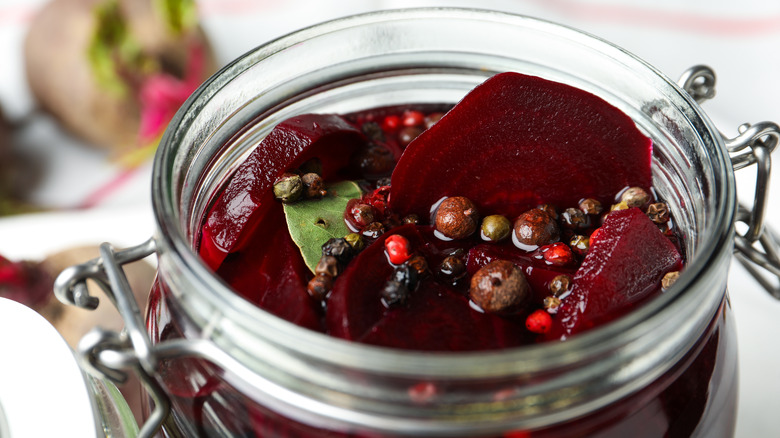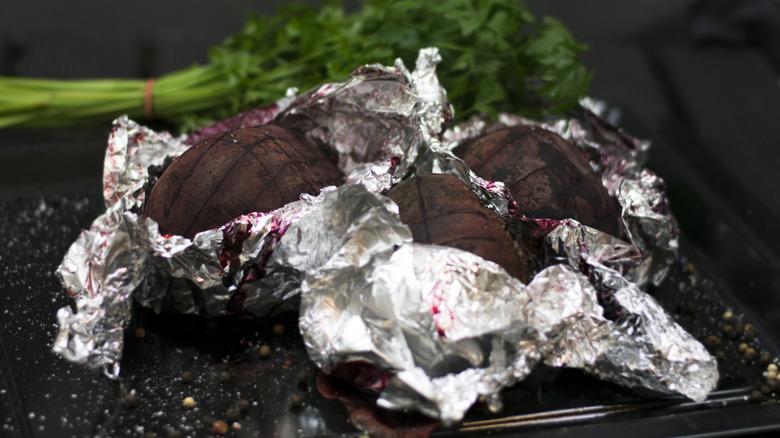The Extra Step You Should Take Before Pickling Beets
Love beets or not, it seems there's not much wiggle room between the two. If you're already fond of the earthy, rich taste, you probably don't need to be convinced of their attributes. First, as a root, they last a good long while in storage, per The Almanac. They can be eaten raw, roasted, candied, boiled, or pan-fried (endearingly called red-flannel hash via New England Today Food).
According to The Almanac, beets are easy to grow and can even endure cold-weather conditions. Green Upside states that beets can grow from 2 to 4 inches in diameter and have a quick turnaround time from planting, so gardeners and cooks may find themselves with a glut of fresh beets and a need to put them to use. For example, during the Victorian era, the juice was even used cosmetically to color women's lips and cheeks a healthy red-pink, notes PBS.
But vanity aside, pickling is another excellent way to take advantage of this purple-red root, preserving some freshness for a later table. There are many varieties of pickled beet recipes. Relishing It features traditionally savory flavors such as onion, dill, or hard-boiled eggs, while Outdoor Apothecary includes warming cloves, ginger, or cinnamon. No matter the recipe you try, however, there is one step you shouldn't skip out on for the best and brightest pickled beets.
Wrap and roast beets to maintain their flavor and create soft texture
To enhance beets' inherent sweetness, they should be roasted before pickling, per Kitchn. Matt Ivan, the food blogger for Plating Pixels, also notes that this cooking method creates a richer depth of flavor than boiling, and using crunchy raw beets for pickling wouldn't be as easy to eat. Furthermore, roasting vegetables encourages caramelization that creates a pleasant "nutty" taste, and it occurs more noticeably in sugar-heavy vegetables, like beets.
Wrapped whole in aluminum foil before cooking, it's a breeze to remove the skin; simply squeeze gently, protecting your hands from staining with a towel (unless that's the look you're going for), and the beet should slide free from the peel. Ivan shares that this should also keep the beets' texture soft, plump, and palatable since they cannot dry out or burn.
The cut wedges readily soak up the pickling liquid and seasonings since they're still warm from the oven, but you could also slice the beets thinly to encourage better absorption (via Kitchn and Plating Pixels). Next time you find yourself with an excess of beets, whether canned or fresh, and a craving for a unique snack or salad topping, consider pickling them — but roast them first for better eats.

